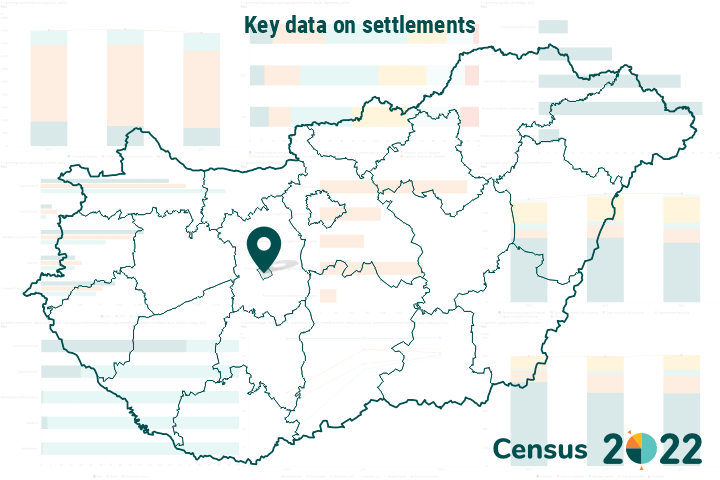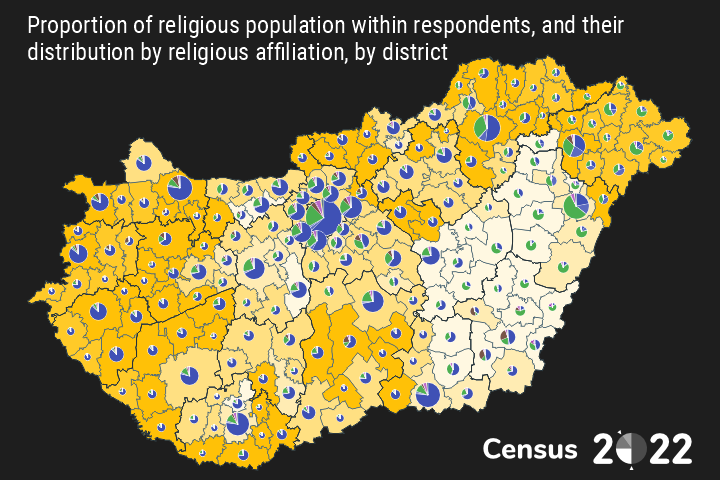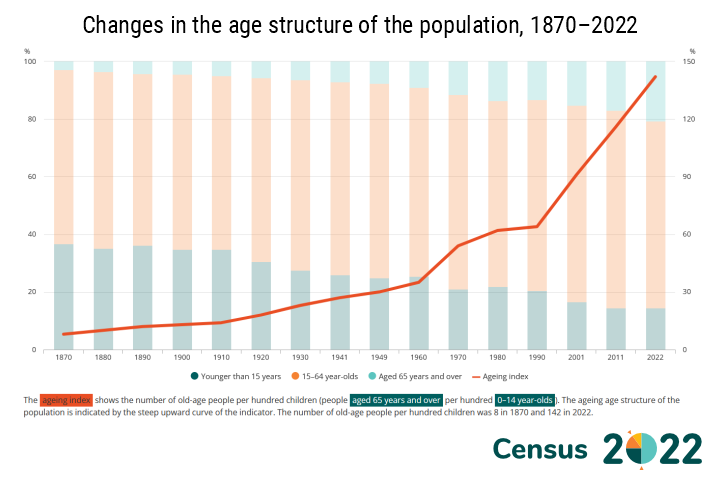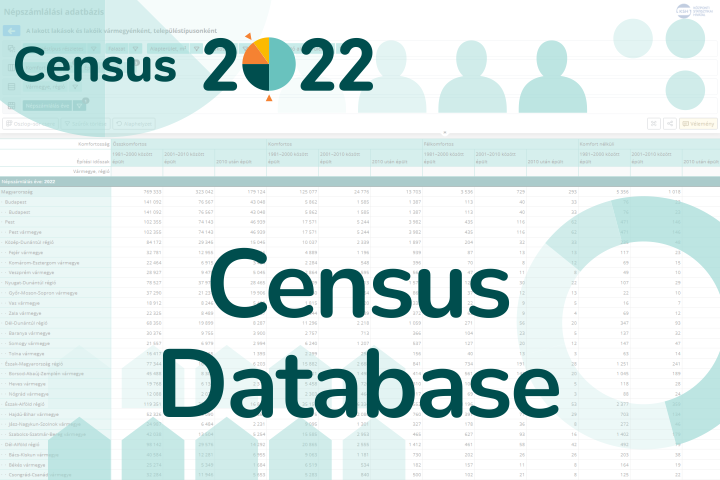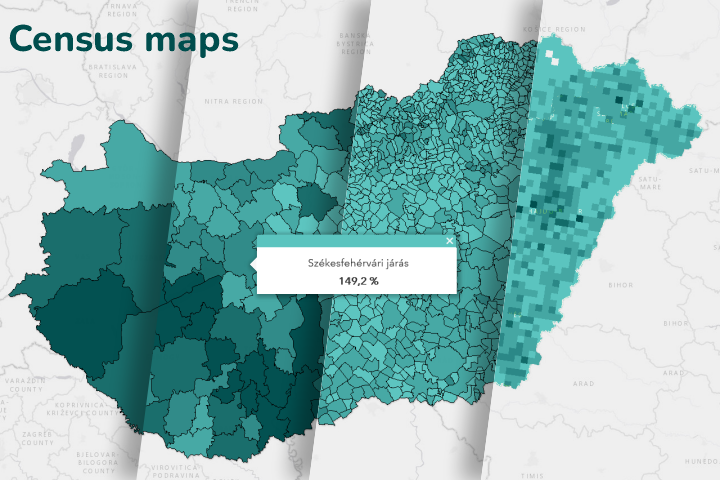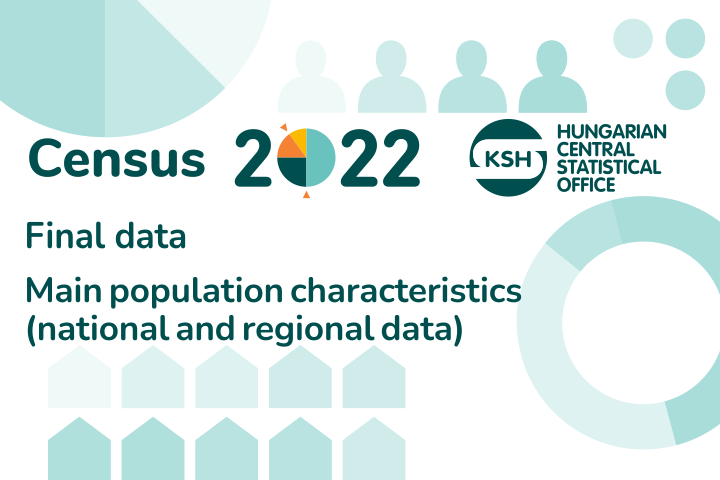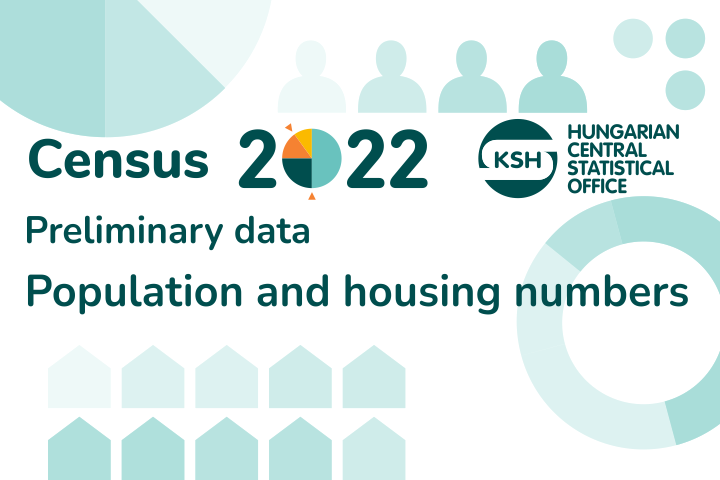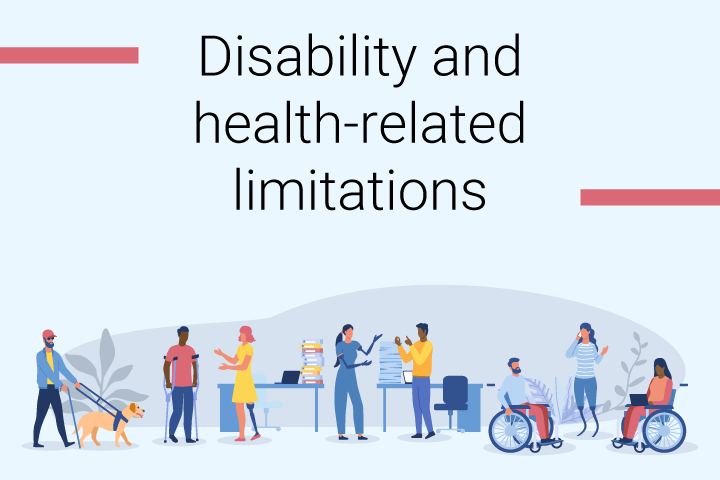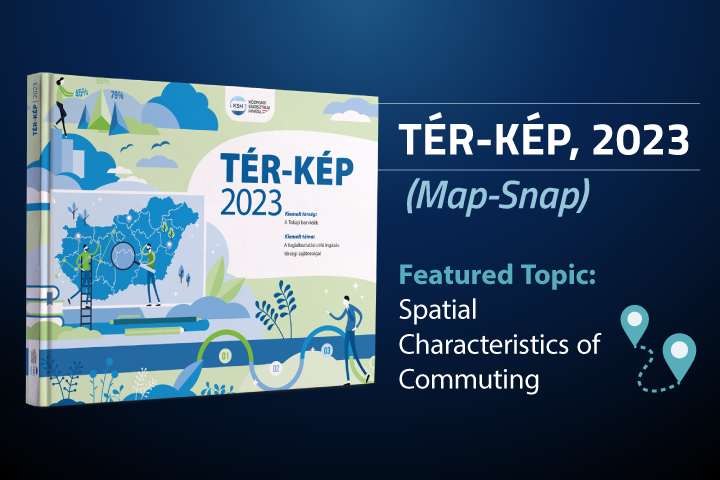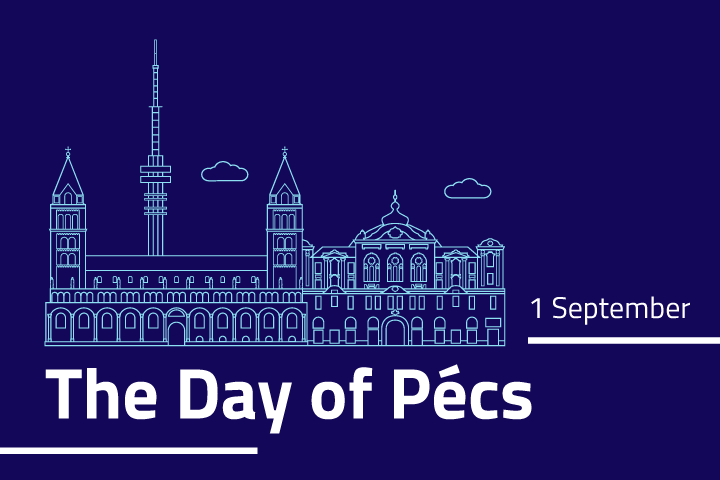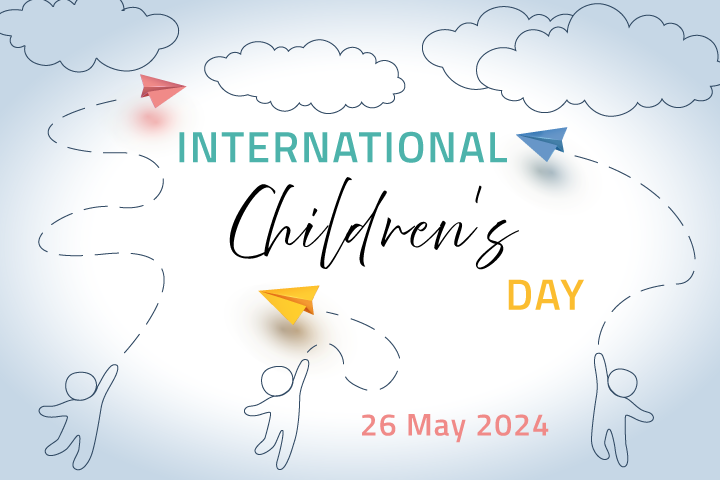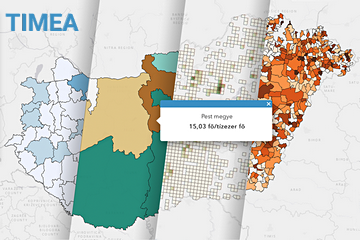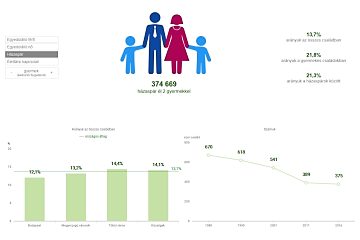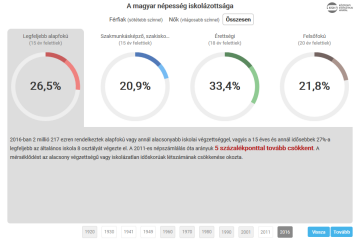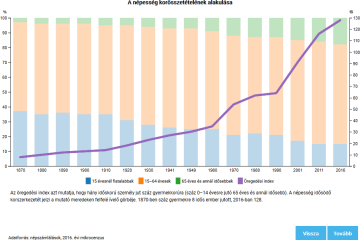Censuses
A census is a regular, usually repeated every 10 years, full-scale status survey that covers the entire population of a country and applies to a predetermined date. The census is the largest collection of population data and aims to provide an accurate and detailed picture of the size, demographic characteristics, health, employment, living and housing conditions of the population of Hungary. This information is necessary for the preparation of economic and social decisions affecting the lives of all of us, for planning local development and for scientific research.
Key figures
Resident population
Indicator description
The census population is the population determined on the basis of place of usual residence, regardless of registration.
Source of data:
Cenusus 2022
Last data for period: 2022
Size of housing stock
Indicator description
The housing stock is composed of dwellings, both occupied and unoccupied, and occupied holiday homes.
Source of data:
Cenusus 2022
Last data for period: 2022
Number of inhabitants per 100 occupied dwellings
Indicator description
Evolution of the number of inhabitants per 100 dwellings at the time of the census. A dwelling is considered occupied if at least one person was living in it regularly and habitually at the time of the census.
Source of data:
Cenusus 2022
Last data for period: 2022
Average floor area of dwellings occupied
Indicator description
The floor area of the dwelling is the floor area of all rooms in the dwelling, expressed in whole m².
Source of data:
Cenusus 2022
Last data for period: 2022
Featured
Census 2022 – Key data on settlements
The ‘Most important data on settlements’ application presents the 3155 settlements of Hungary and the 23 districts of the capital city based on the last three censuses (2001, 2011, 2022) with the help of impressive charts. 16 charts illustrate the demographic, educational and labour market characteristics of the population of the settlement, its ethnic and religious composition, the characteristics of households, families and housing conditions. A map can be used to select neighbouring settlements. The data in the charts can be downloaded in a variety of formats or viewed in the Census database.
Proportion of religious population by religious affiliation, 2022
In Hungary, 60% of the population answered the question on religion or denomination in the 2022 census, 73% of the respondents, 4.2 million persons declared themselves as belonging to a religious community or denomination. Of those who indicated their religion, 69% were Catholic and 23% Reformed.
Changes in the age structure of the population, 1870–2022
Hungary is one of the countries with a declining and ageing population. As a result of persistently low fertility and rising life expectancy, the proportion of people of child age is falling and the proportion of older people is rising. At the time of the first census in 1870, there were 8 elderly people for every 100 children; in 2022, 142. This process is placing an increasing burden on social care systems.
New statistical data domains available in the census database
New data have been added to the census database on the following topics: commuting of employed persons, detailed educational attainment of the population and field of study of educational attainment, population by place of residence before the current one and place of residence at birth, detailed data on limitation due to health status, detailed data on digital activities carried out by the population.
Census Maps
With the Census Maps application you can create thematic maps for different territorial levels of Hungary (region, county, district, municipality). A number of setting and filtering options are available for displaying demographic, education, economic activity, ethnicity, religion, housing and other data from the 2022 and 2011 Censuses, and for selecting the territorial units. The maps and data produced can be downloaded and interpreted using methodological information.
Census 2022 – Final data: Main population characteristics
According to the final census data, on 1 October 2022, there were 9 603 634 people living in Hungary, 98% of them Hungarian citizens. Since the previous census in 2011, the population has decreased by 334 thousand, while the number of older age groups has increased. Employment has increased significantly in line with the labour market restructuring. Education levels have continued to improve and more people speak foreign languages.
Census 2022 – Preliminary data
According to the preliminary census data, the population of Hungary on 1 October 2022 was 9 million 604 thousand. The number of people living in the current territory of the country peaked in 1980, at 10 million 709 thousand, and has been steadily decreasing since then. The main reason for this is natural decline: due to an ageing age structure, 464 000 more people have died since the last census than were born. This decline has been mitigated by a 131 thousand increase in immigration, mostly from neighbouring countries. The country's housing stock consists of 4 million 593 thousand dwellings.
Related themes
- Education
- Housing
- Labour
- Men and women
- Population and vital events
- Regional statistics
- The young and the elderly
Methodological information
Related Censuses
Summary tables (STADAT) ( infra-annual data annual data ) |
Latest update | Next update |
|---|---|---|
Housing stock | ||
| 18.1.2.1. Dwelling stock and inhabitants per hundred dwellings by county and region, 1 January | 04/07/2025 | – |
| 18.1.1.2. Dwelling stock, inhabitants density within dwellings, 1 January | 17/04/2025 | – |
Population | ||
| 22.1.1.2. The number of population and average age by sex | 27/06/2025 | – |
| 22.1.1.3. Population by sex and age, 1st January | 27/06/2025 | – |
| 22.1.1.4. Age composition of population, dependency ratios, ageing index | 27/06/2025 | – |
| 22.1.1.5. 15 year-old and older population by marital status, 1st January | 27/06/2025 | – |
Summary table | ||
| 18.1.1.1. Summary data of housing | 28/10/2025 | – |
| 22.1.1.1. Main indicators of population and vital events | 18/07/2025 | – |
